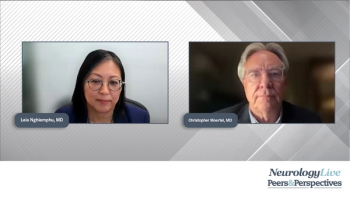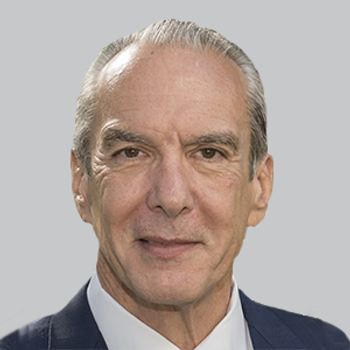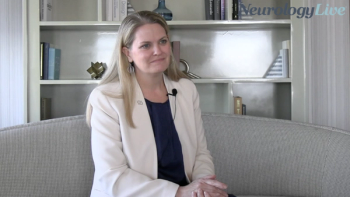
NeuroVoices: Joseph S. Takahashi, PhD, on the Circadian Clock’s Impact on Metabolism, Aging and Lifespan
The professor and chair of neuroscience at UT Southwestern Medical Center offered an overview on his keynote lecture presented at AHS 2025 on the circadian clock in relation to headache.
Life on Earth is influenced by the 24-hour day-night cycle, which can shape the energetic patterns of most living organisms. To help anticipate this daily cycle, circadian clocks have evolved in many species. Prior research conducted by Joseph S. Takahashi, PhD, and his lab team identified the first gene associated with circadian rhythm regulation in mice and humans, known as the “Clock” gene. This gene is considered a key regulator of circadian behavior and physiology in mammals, and research has shown that it can interact with multiple cellular pathways.
Additional research in Takahashi’s lab has suggested that time-restricted feeding and circadian alignment of eating could contribute to lifespan extension under caloric restriction. Given that the circadian gene network has been associated with several aging-related pathways, Takahashi and his colleagues are aiming to investigate whether strengthening circadian function could influence lifespan. This was all presented by Takahashi as a keynote lecture that opened the sleep plenary session at the recently concluded
In a new iteration of
NeurologyLive: Could you provide an overview of your keynote lecture presented at AHS 2025?
Joseph S. Takahashi, PhD: I got invited to kick off the sleep session at AHS 2025, which was on circadian rhythms of sleep and headache. I apologize; I don't work nor know much about headache but I'm an expert in circadian clocks. My lab discovered the clock gene almost 30 years ago, which is the master control gene for circadian clocks in mice and humans, and that discovery led to a number of surprising results.
The first is that the gene is expressed in essentially every cell in your body. We used to think the clock was only in the brain and the body just followed passively. But once we discovered the genes that control and generate the clock, we found that every cell in your body has the capacity to have a clock. So, the majority of your cells have their own 24-hour circadian clock.
That was the introduction to my lecture, just to give some background on the molecular mechanism of the circadian clock in mammals. Then, the large majority of my talk was on what we’ve discovered in the last 25 years or so about what the clock is doing in the body, not just in the brain.
One of the major functions is to control metabolism at a cellular level. I showed some examples of how pervasive that control is, it’s quite amazing. The clock controls every metabolic pathway in the cell. That was another eye-opening surprise we made maybe 15 years ago or so.
Since then, many different indications have been discovered that are regulated by the clock. The clock plays an important role not only in metabolism but in immune function, neurodegeneration, cancer susceptibility, etc. Almost every process people have studied can be shown to have some regulation by the circadian clock system and the gene network.
Really, the breakthrough for us was discovering the gene. Once we had genes, proteins, and molecules, we could then make direct connections to known pathways. There are direct links between clock genes and immune function; it plays a very important role there. We could see it at the molecular level. Same with cancer genes, cell growth, and even neurodegeneration, there’s direct interaction of clock genes with known pathways and genes that control those.
I think that’s also happening with our understanding of headache. A number of the factors that modulate headache such as sleep and circadian rhythms, and some of the transmitters and neuropeptides, those are involved in the circadian system. That’s likely where some of that connection comes from.
The end of my talk focused on a new function of the clock that we discovered in the last 5 to 10 years and that is the clock has a very strong impact on lifespan in mice, which is our model organism. It surprised us how strong the influence of the clock is on determining how long lifespan can be extended.
That’s really the focus of our recent work and was the focus of my talk: how the clock affects not only metabolism but health and, ultimately, lifespan. We’re super excited about that because everybody’s interested in health and lifespan, right? It’s really interesting. I’ve never seen so much interest in our recent work because of our demonstration that we can make mice live significantly longer by improving their clocks.
Was there anything else you wanted to highlight from your keynote presentation?
The other feature I highlighted in my talk was that the clock controls all of the so-called hallmarks of aging pathways. There are about a dozen pathways that the aging field has discovered over the last century that are important in aging and lifespan. We found that all of those pathways have genes that are cycling, about half of them. This means the clock is controlling those pathways.
Our new idea, which is what we’re working on now, is that because the clock is regulating hallmarks of aging pathways, that means it’s upstream. We found the clock gets weaker as you get older, and if you boost the clock, that makes the mice live longer.
We think what might be happening is that by boosting the clock, we can boost many hallmark aging pathways at once by targeting this new site — the clock — which is like a node. Then, that has downstream effects to affect all these existing longevity pathways. We think that may be why making the clock stronger can actually enhance lifespan and health span.
What do we know about how circadian rhythms affect overall health and disease risk?
Adequate sleep is essential for almost all physiological functions, and there are a couple of features to that. Optimal for humans is 7 to 9 hours of sleep. That’s difficult for many of us in modern society to achieve. There are many factors. One is artificial lighting, which extends the night and changes the timing of our sleep. The timing of our sleep is also important, and regularity of sleep is also important.
There’s very clear evidence that, for example, in Alzheimer disease, sleep deficits exacerbate various neurodegenerative disorders and probably affect headache and the frequency of headache as well. Sleep is definitely essential, and sleep timing is controlled by the clock, but it’s a separate process from the circadian clock.
The other feature I talked about in my lecture was about something called time-restricted eating, which you may have heard of because it’s a fad diet. It’s called intermittent fasting. A lot of the impetus for intermittent fasting comes from the work that me and my colleagues have done on what we call time-restricted feeding or time-restricted eating where you eat in a limited window each day. Our version is you do this on a daily basis.
Intermittent fasting is more general, it incorporates lots of different kinds of fasting protocols. Some people do alternate-day fasting, they eat for 24 hours and then fast for 24 hours. That’s different. The other popular version is to fast for 2 days and then eat anything you want for 5 days every week. That’s also totally different. We found that daily fasting at the right time of day that’s what gives you the most benefit for both health and lifespan in mice.
Transcript edited for clarity.
REFERENCES
1. Takahashi JS. KEYNOTE: Circadian Clock Regulation of Metabolism, Aging and Longevity. Presented at: 2025 AHS Annual Meeting; June 19-22; Minneapolis, MN. Plenary 3: SLEEP.
Newsletter
Keep your finger on the pulse of neurology—subscribe to NeurologyLive for expert interviews, new data, and breakthrough treatment updates.

































